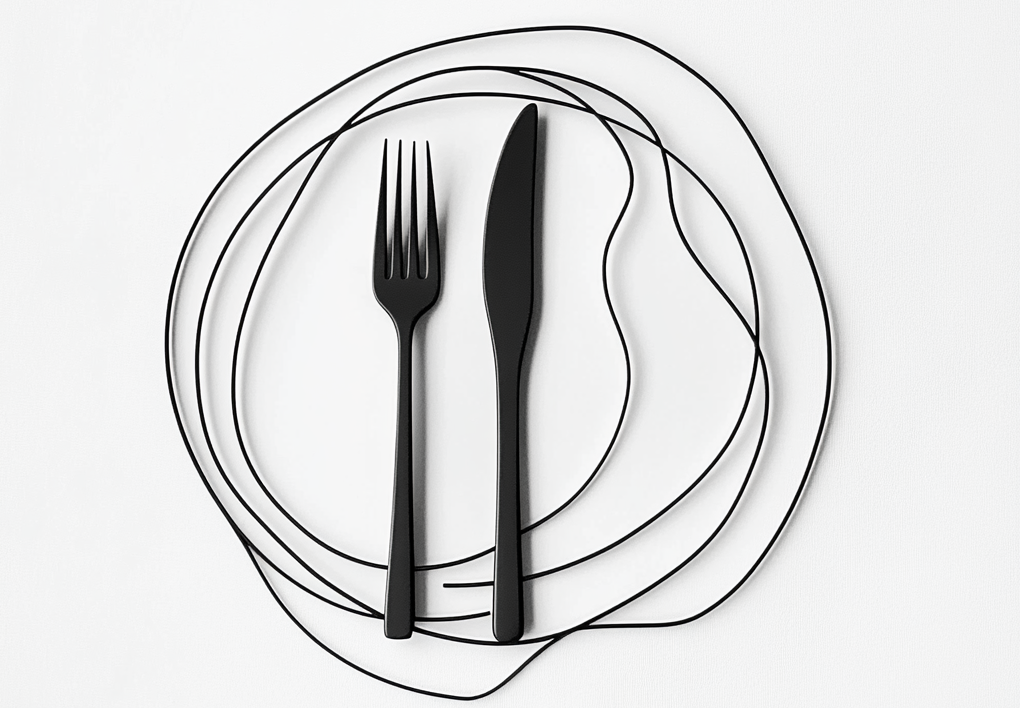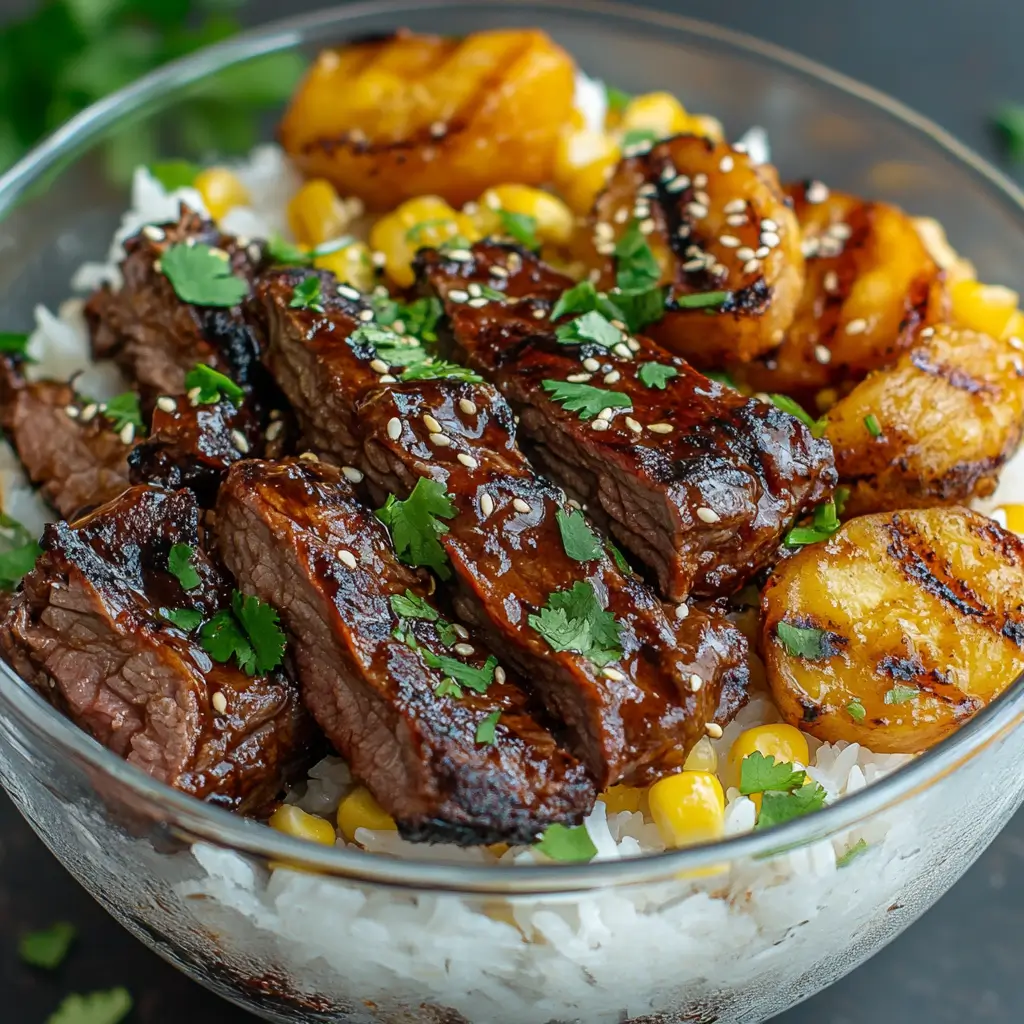Korean BBQ Beef Bowl is a dish that has captured the hearts (and stomachs) of food lovers worldwide. It’s the perfect mix of smoky-sweet beef, fresh veggies, and fluffy rice, creating a meal that feels like a restaurant-quality experience but can easily be recreated in the comfort of your kitchen.
Whether you’re a foodie mastering your next home-cooked dish or just curious about Korean cuisine, this step-by-step guide will help you whip up a mouthwatering Korean BBQ beef bowl. Along the way, you’ll also discover tips for customizing, nutritional benefits, and the cultural significance of Korean cooking.
The Rise of Korean BBQ Beef Bowl, and Its Global Appeal
Korean cuisine has been having a moment. With its bold flavors, vibrant colors, and emphasis on balance and freshness, it’s no wonder Korean dishes like kimchi, bibimbap, and bulgogi are staples in kitchens and restaurants globally.
Anchored in a rich culinary tradition that prioritizes community dining and fresh ingredients, Korean BBQ brings people together to enjoy marinated meats grilled to perfection. The idea of a Korean BBQ beef bowl takes this communal experience and distills it into a convenient, single-serving dish that’s just as satisfying.
Effortlessly balancing umami, sweetness, and spice, this dish caters to adventurous eaters and comfort food lovers alike.
The Ingredients You’ll Need for Your Korean BBQ Beef Bowl
The beauty of Korean BBQ Beef Bowl, lies in its accessibility. Most of the ingredients can be found at your local grocery store or Asian food market. Here’s everything you’ll need for one bowl (scale up for additional servings):
Beef Marinade and Meat
- 1 lb of thinly sliced beef (ribeye or sirloin) – Tender cuts work best. Ask your butcher to slice the beef thinly for authentic results.
- 3 tbsp soy sauce – Adds that salty, umami goodness.
- 2 tbsp brown sugar – Brings the perfect touch of sweetness.
- 1 tbsp sesame oil – A key element of Korean flavors.
- 1 tbsp mirin (optional) – Adds slight acidity and depth of flavor.
- 4 cloves garlic, minced
- 1 tsp grated ginger
- 1 tbsp sesame seeds – For garnish and nutty flavor.
The Bowl
- 2 cups cooked white (or brown) rice – Jasmine or short-grain rice works well.
- 1 cup shredded carrots – Adds crunch and freshness.
- 1 cup thinly sliced cucumbers – Helps lighten the dish.
- 1 cup steamed spinach or baby bok choy – Brings in some greens.
- Kimchi – Optional, but highly recommended for a tangy, fermented kick.
Finishing Touches
- Green onions – Thinly sliced for garnish.
- Gochujang sauce – A spicy Korean chili paste that ties everything together.
How to Make the Perfect Korean BBQ Beef Bowl
1: Marinate the Beef
- Combine soy sauce, brown sugar, sesame oil, mirin, garlic, and ginger in a bowl to create the marinade.
- Add the thinly sliced beef and mix to ensure all pieces are coated. Cover with plastic wrap and refrigerate for 30 minutes to 2 hours.
2: Prep Your Veggies
- While the beef marinates, prepare your toppings. Shred the carrots, slice cucumbers, and cook the spinach or baby bok choy until just tender.
3: Cook the Rice
- Cook your rice according to the package instructions. If you own a rice cooker, this is the perfect time to put it to good use!
4: Cook the Beef
- Heat a skillet or grill pan over medium-high heat. Add a touch of sesame oil.
- Cook the marinated beef in batches to avoid overcrowding, ensuring each piece gets a delicious sear. This should take 1-2 minutes per side (thin slices cook quickly!).
5: Assemble Your Bowl
- Start with a generous scoop of rice as the base.
- Add cooked beef, then arrange carrots, cucumbers, spinach, and kimchi in sections around the bowl.
- Drizzle gochujang sauce on top or serve it on the side for extra flavor.
- Garnish with green onions and sesame seeds.
And voilà! Your homemade Korean BBQ beef bowl is ready to enjoy.
Tips for Customizing Your Korean BBQ Beef Bowl
Toppings
While the classic ingredients are delicious, don’t hesitate to get creative with toppings. Consider adding avocado slices, a soft-boiled egg, roasted seaweed, or pickled radishes for extra flavor.
Make It Vegetarian
Not a meat-eater? No problem. Replace the beef with tofu or mushrooms. Marinate them the same way for equally tasty results.
Spice Level
Adjust the heat by controlling the amount of gochujang you use. If you’re not a fan of spicy food, opt for a sesame soy glaze instead.
Nutritional Benefits of Korean BBQ Beef Bowls
One of the best things about this dish is its balance of macronutrients. Here’s why it’s a nutritional win:
- Protein-Packed: Beef (or tofu) provides a solid source of protein to keep you feeling full and energized.
- Rich in Fiber: The vegetables, like cucumbers and carrots, ensure you’re getting your greens and fiber intake.
- Low in Empty Calories: Unlike fast food, this bowl avoids processed carbs or overly heavy sauces.
- Customizable for Diets: Use brown rice for more fiber, or zoodles (zucchini noodles) for a low-carb option.
Why This Recipe Deserves a Spot in Your Weekly Meal Rotation
The Korean BBQ beef bowl isn’t just a recipe—it’s an experience. It combines bold, authentic flavors with a modern, customizable approach. Plus, it’s quick to prepare, making it perfect for weeknight dinners or meal-prepped lunches.
Once you’ve mastered this bowl, you’ll find endless variations to explore, adapting it to your taste buds and dietary needs. Make this your gateway into the rich and flavorful world of Korean cuisine!
Exploring the History Behind Korean BBQ
Korean BBQ, known as “gogi-gui” in Korean, has a legacy deeply rooted in the history and culture of Korea. The tradition of grilling meats can be traced back to the Goguryeo era (37 BCE–668 CE), when the early Korean people skewered and grilled meat over an open flame. Over centuries, this evolved into the vibrant, interactive dining experience we know today.
Central to Korean BBQ is the communal aspect, which reflects Korea’s emphasis on social harmony and shared meals. Sitting around a grill, family and friends share stories, laughter, and perfectly cooked cuts of meat. This tradition emphasizes not just the flavors but the connections fostered around the dining table.
The introduction of marinades, such as soy sauce-based mixtures with garlic, ginger, and sesame oil, added depth to the flavors. Bulgogi and galbi, two iconic dishes within the Korean BBQ spectrum, highlight the sophistication of these techniques. Today, this rich culinary innovation has earned its place on the global stage, with Korean BBQ restaurants thriving worldwide.
By understanding the history behind dishes like the Korean BBQ beef bowl, we gain a deeper appreciation for their origins and the cultural stories they carry. It’s more than just food—it’s a heartfelt expression of heritage and togetherness.
Pairing Korean BBQ Bowls with the Perfect Side Dishes
No Korean BBQ meal is complete without an array of complementary side dishes, or “banchan.” These small, flavorful plates enhance the main dish while introducing a variety of textures and tastes. When serving your Korean BBQ beef bowl, consider including one or more of the following sides to elevate the dining experience:
1. Kimchi
This iconic Korean staple, made from fermented cabbage and radishes, delivers a spicy, tangy flavor that pairs beautifully with the richness of the beef. Its probiotics also provide digestive health benefits, making it a healthy and flavorful addition.
2. Japchae
Japchae is a classic noodle dish made with sweet potato starch noodles, stir-fried vegetables, and a soy-based sauce. Its mild sweetness and chewy texture add a delightful contrast to the bold flavors of the BBQ bowl.
3. Korean Pancakes (Pajeon)
Savory pancakes, like scallion or seafood pajeon, make for an excellent side dish. Crispy on the outside and tender inside, they are perfect for dipping into soy-based sauces.
4. Pickled Vegetables
Pickled radishes, cucumbers, or carrots bring a refreshing and tangy balance to the heavier flavors of the BBQ beef bowl. Their crunch and acidity cut through the richness, keeping the meal light and enjoyable.
5. Seaweed Salad
A light and refreshing seaweed salad complements the bowl’s textures. Its umami-laden flavor offers a subtle brininess that further enhances the dish.
6. Korean-Style Dumplings (Mandu)
Whether steamed or pan-fried, mandu can serve as a delightful side or appetizer. These dumplings, filled with meat, tofu, or vegetables, add another layer of satisfaction to the meal.
By incorporating these side dishes, you create a balanced and immersive Korean BBQ feast. Each bite offers a medley of flavors and textures, making the experience truly unforgettable. Whether you’re hosting a dinner party or enjoying a quiet weekday meal, these additions transform a simple bowl into a culinary adventure.
Final Thoughts:
The Korean BBQ beef bowl is the perfect balance of sweet, savory, and spicy flavors, making it a must-try meal for any occasion. With tender marinated beef, fluffy rice, and fresh toppings, this dish is not only delicious but also quick and easy to prepare at home.
Whether you’re cooking for a busy weeknight dinner or meal prepping for the week, this Korean-inspired bowl is guaranteed to satisfy your cravings. Plus, you can customize it with different proteins and toppings to make it your own.

